Akanin'ny Nofy is a private reserve on Lake Ampitabe, which is one of a chain of lakes along the Pangalanes Canal that runs north/south very close to Madagascar's east coast. The canal in some areas is just a few dozen meters from the Indian Ocean. The reserve is also known as Palmarium, as it is home to a large variety of palms collected by a German landowner in the 1960's. The internet will cheerfully tell you that Palmarium hosts over 100,000 species of palms, but I myself do not believe the internet when it says things like this.
To reach Akanin'ny Nofy, we drove for a long long time from Andasibe toward the coast, and then boarded a small boat for a two-hour ride up the canal to the reserve. We stayed at Palmarium for three nights.
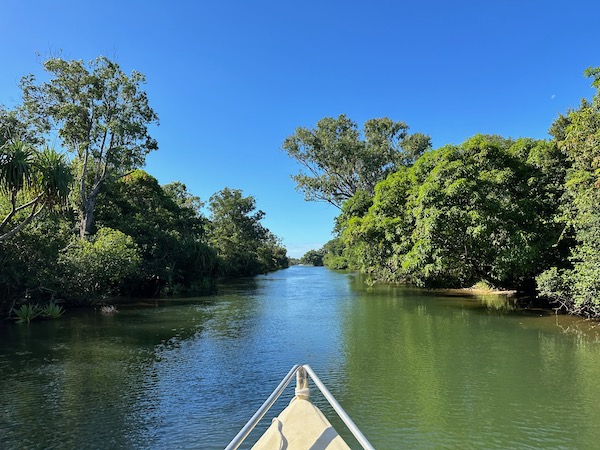
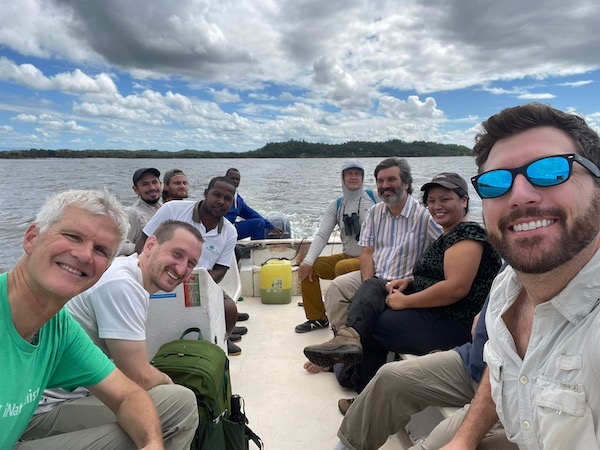
The view in both directions on the Pangalanes Canal
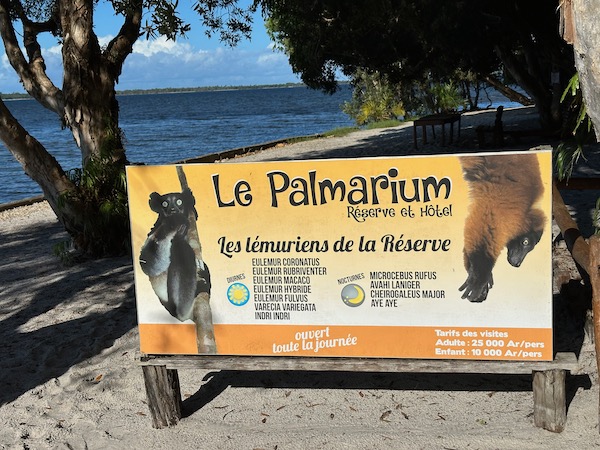
Welcome to Le Palmarium!
Hmm, that seems like a lot of lemur species for one location, I wonder what's up with that? And double hmm, what the heck is Eulemur hybride? I don't remember that one from the field guides.

Lake Ampitabe beach
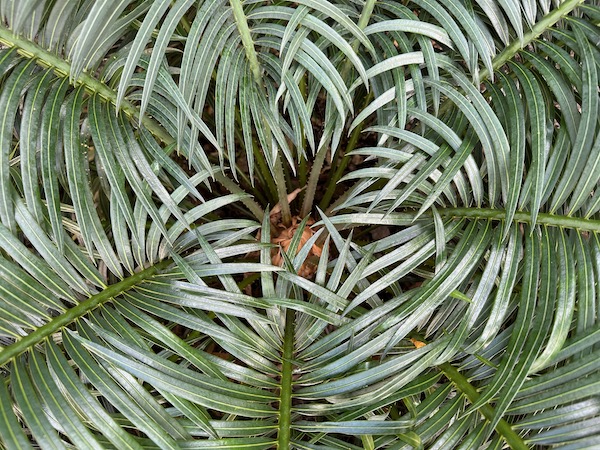
Madagascar Cycad, Cycas thouarsii
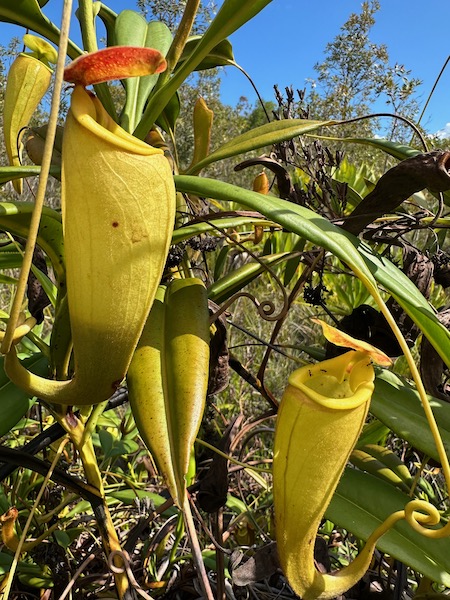
Nepenthes madagascariensis
One of two native Madagascar pitcher plants, these were found along a small stream that feeds into Lake Ampitabe.
All right, it's time to talk about all those lemurs. As you might have guessed, these are not all lemurs that just happened to be living in the natural habitat where this private reserve was created. Some of them do just happen to live in the area, but many were brought in from other parts of Madagascar by the former proprietor of the reserve. So now there are free-ranging, semi-wild populations of considerably more lemur species than would normally be found in a single area. I'm told that the reserve employees used to feed the lemurs regularly, but that they no longer do so.

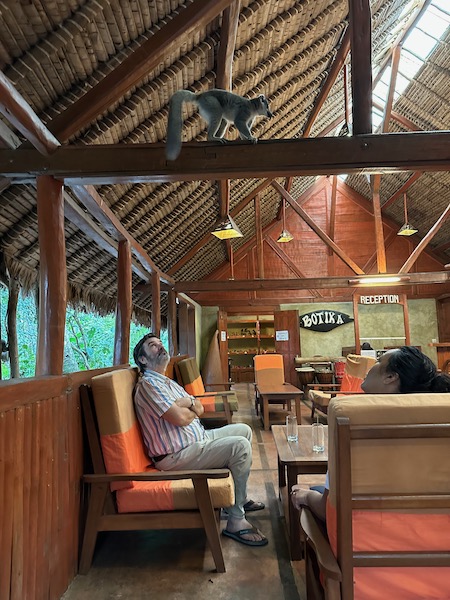
The Palmarium bar and lounge
Whether or not you feed the lemurs deliberately, some of them are quite bold about looking for table scraps to steal.
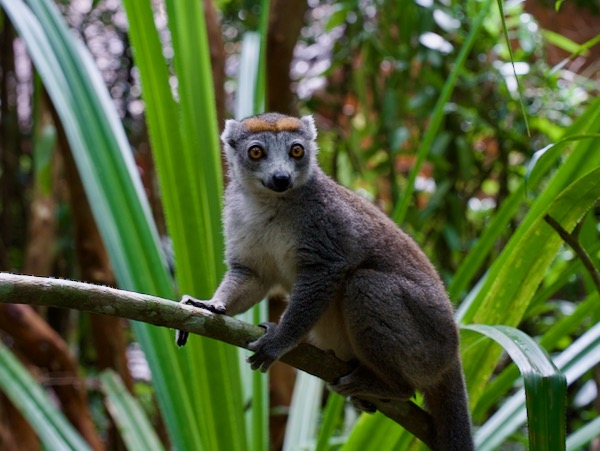
Crowned Lemur, Eulemur coronatus. Native? no.
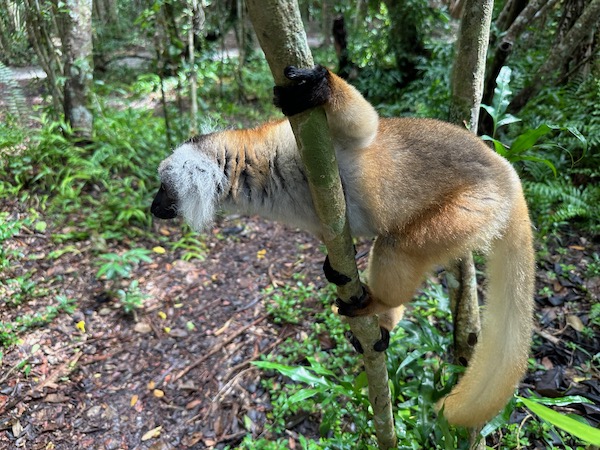
Black Lemur, Eulemur macaco. Native? no.
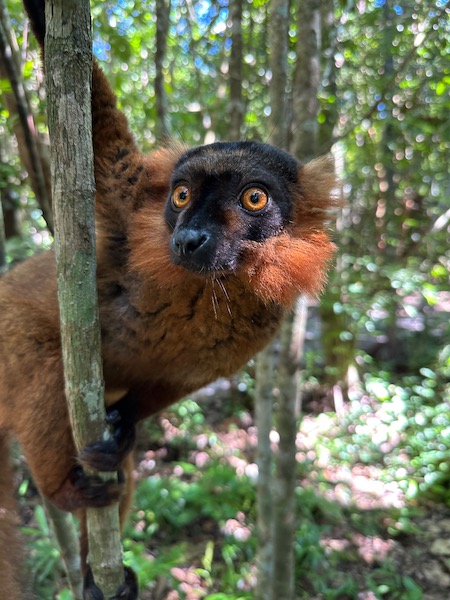
Crowned Lemur x Black Lemur hybrid. Native? not here, or anywhere else.
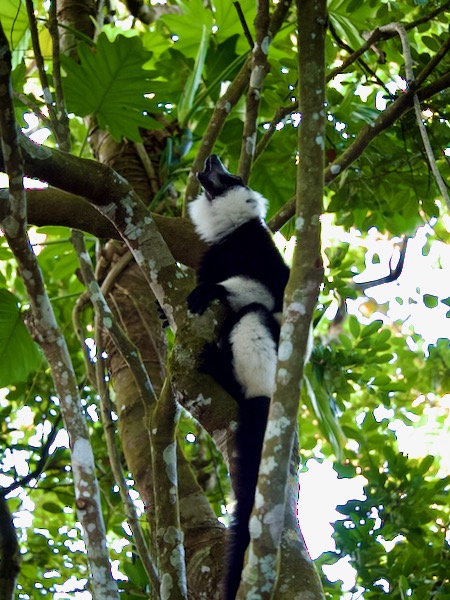
Black-and-white Ruffed Lemur, Varecia variegata. Native? maybe.
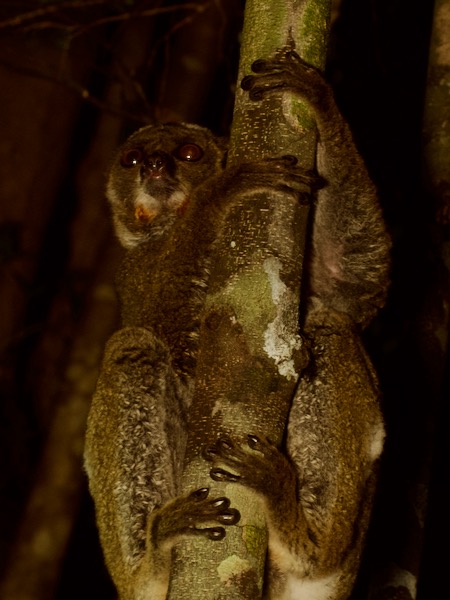
Gmelin's Woolly Lemur, Avahi laniger. Native? yes!
One of Palmarium's main attractions is the near-guaranteed opportunity to see the weirdest of all lemurs, the elusive Aye-aye. These buck-toothed, scraggly-haired, bug-eyed, nocturnal lemurs are extremely difficult to see in the wild even though their range covers much of Madagascar. Ten or so Aye-ayes inhabit a small island within the reserve boundaries. Tourists take a short boat ride to the island, where reserve employees stash coconuts at certain forest-edge locations. The Aye-ayes usually come out to chomp on the coconuts for a while. They are illuminated by weak lighting, and the tourists can take photos or videos using only this lighting (i.e., no flash photography). It is amazing to see an Aye-aye creep out of the forest and warily devour a coconut, but it's not really the same as seeing a fully wild Aye-aye would be.
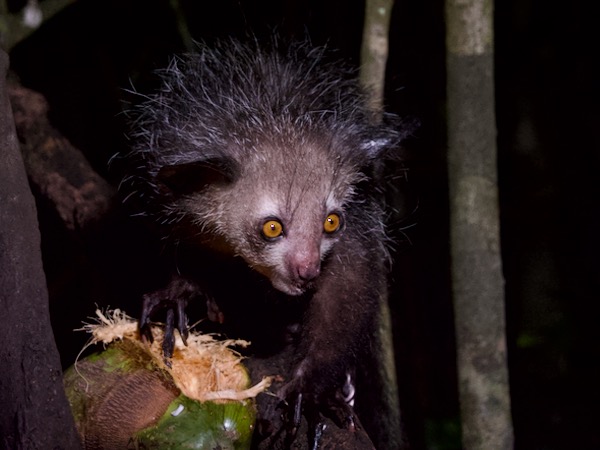

Aye-aye, Daubentonia madagascariensis. Native? claims vary, but probably not.
As far as I know, all of the invertebrates found in this area are native. Well, I'm sure there are some accidentally introduced mosquitoes and such, but I'm pretty sure nobody brought any bugs in to amplify tourist interest. Here are a handful of my favorites.

Belbina madagascariensis
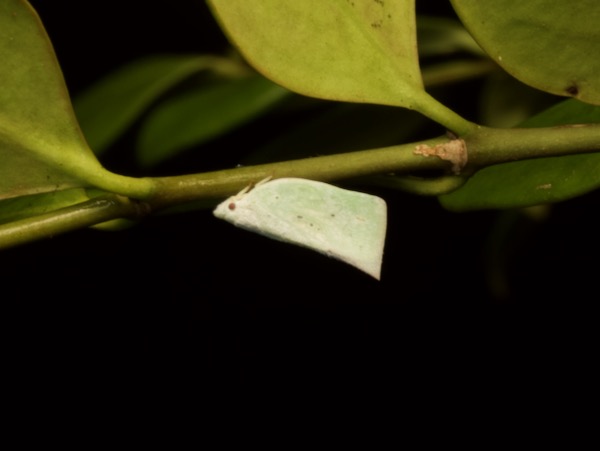
Flatopsis nivea
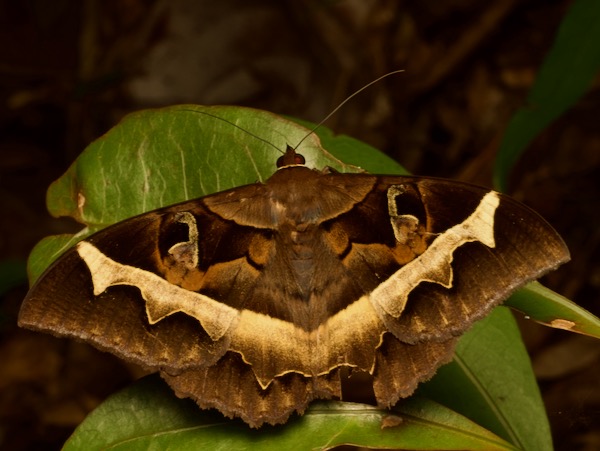
Cyligramma disturbans
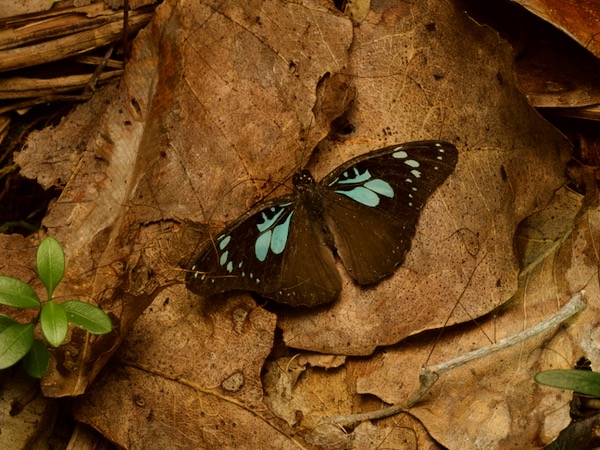
Pseudacraea imerina

Eugnoristus monachus
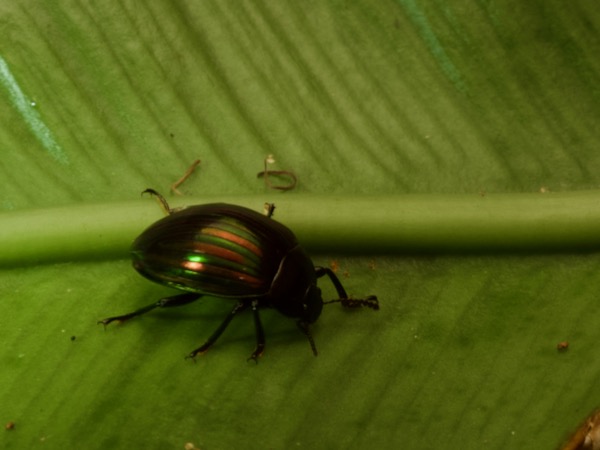
I want to call this the Stripey Pajama Beetle, don't ask me why

Lophyra abbreviata

A bushhopper, family Euschmidtiidae
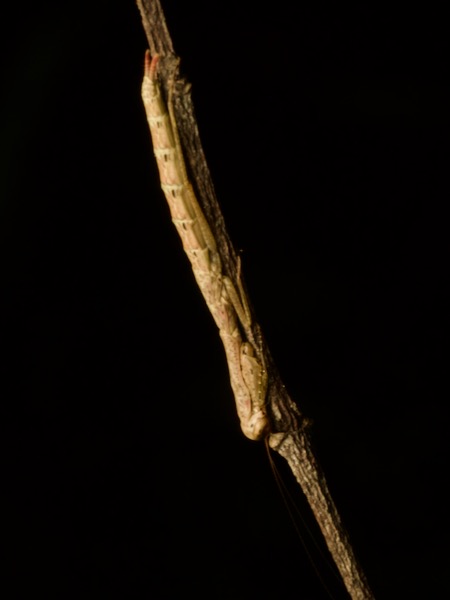
A mantis hidden in plain sight, family Eremiaphilidae
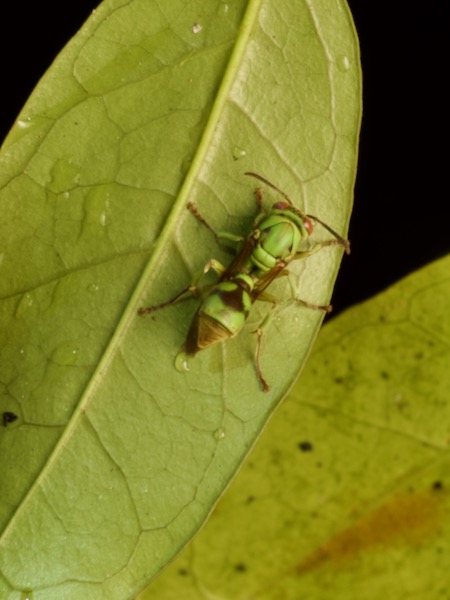
Ropalidia regina
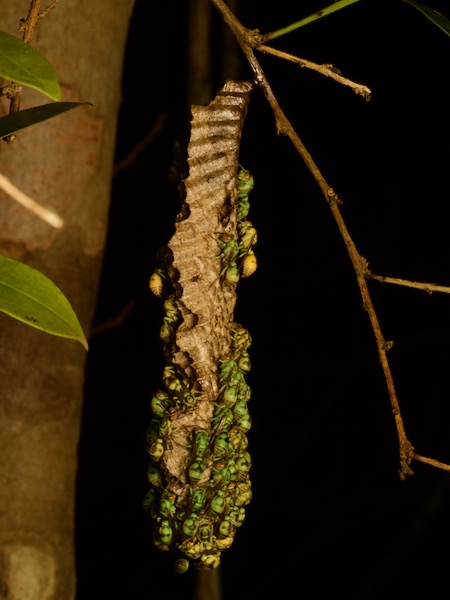
Ropalidia regina
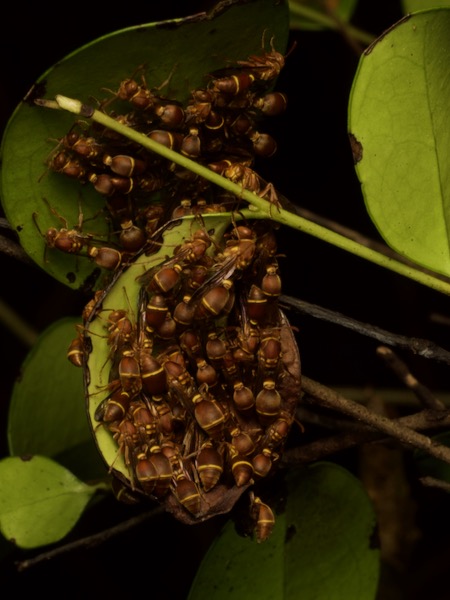
Ropalidia galimatia
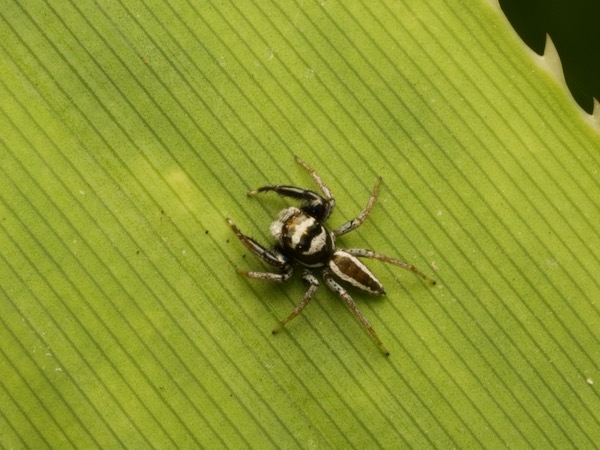
Jumping spider, family Salticidae

Pantropical Huntsman Spider, Heteropoda venatoria
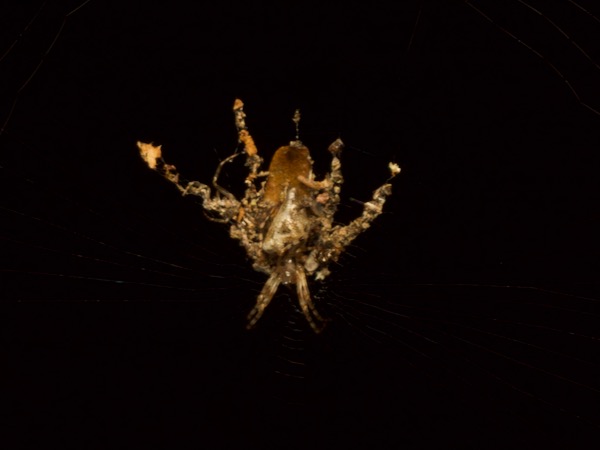


Trashline Orbweavers,
Cyclosa sp.
The small spiders in this group form oddly shaped globs in their webs from bits of detritus and former prey items, in order to disguise themselves. Some species are called "decoy spiders" because the trash globs look like bigger spiders, which might help deter some types of predators.
Akanin'ny Nofy is not a particularly froggy place, being relatively dry compared to forests like those from our first two stops. But, still, Madagascar has a lot of frogs, and even in this dry area in the dry season a variety of froggy types will show up at night to entertain those looking for them.

Mahanoro Digging Frog, Plethodontohyla notosticta, li'l baby
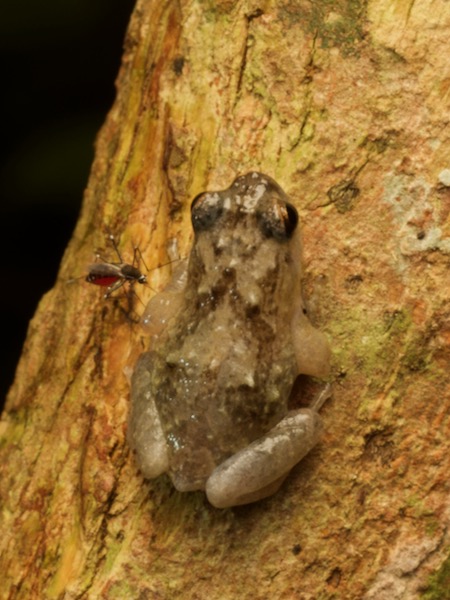
Boulenger's Climbing Frog, Anodonthyla boulengerii, and bloodsucking fiend

Boulenger's Climbing Frog, Anodonthyla boulengerii, soon-to-be happy couple
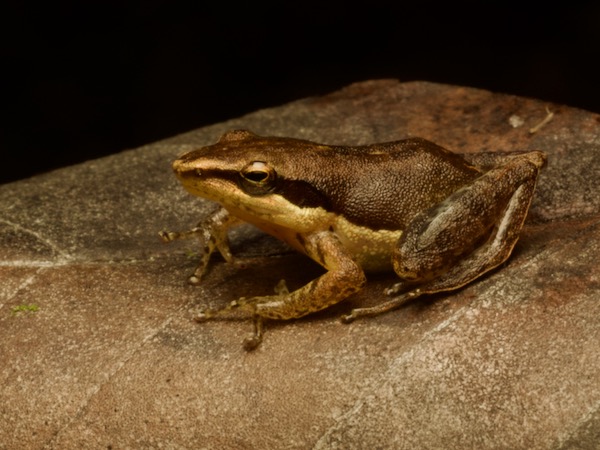
Moramanga Madagascar Frog, Blommersia blommersae
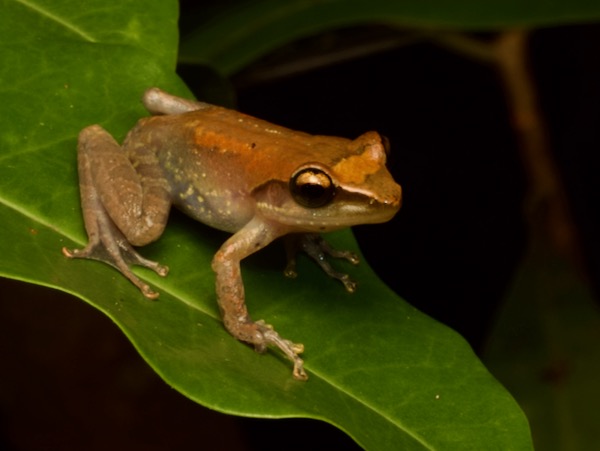
Guibemantis timidus

Blue-back Reed Frog, Heterixalus madagascariensis, typical nighttime appearance

Blue-back Reed Frog, Heterixalus madagascariensis, typical daytime appearance

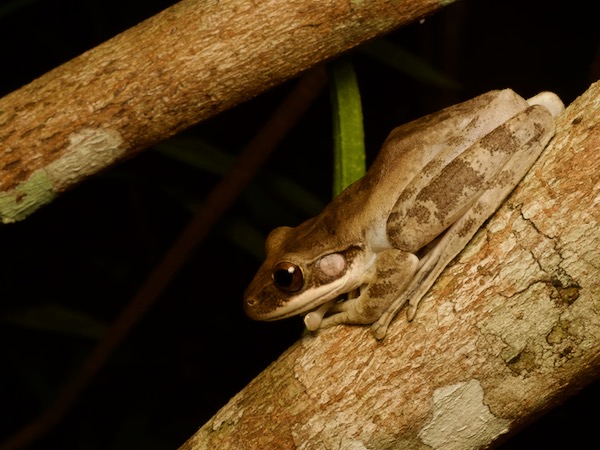
Eastern Bright-eyed Frog, Boophis opisthodon
In Anjozorobe we hadn't seen any snakes at all. On our first five days in the Andasibe area we had seen only one live snake: the big Madagascar Tree Boa that José had found on the way to the lodge parking lot. (We also saw a Forest Water Snake at Andasibe, but that was on our brief return visit later on in the trip). José told us that he expected we would see more snakes at Palmarium, and as usual he was right.
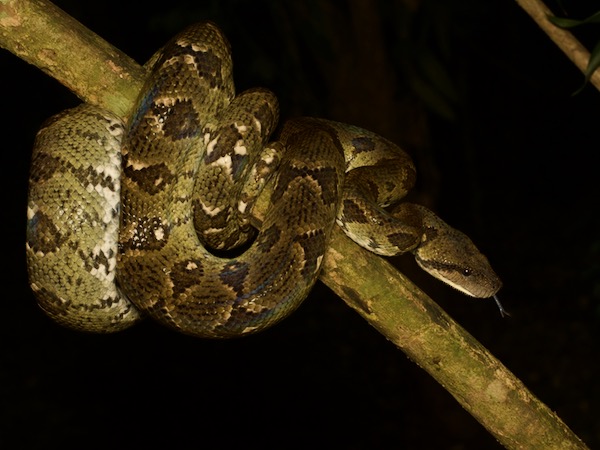
Madagascar Tree Boa,
Sanzinia madagascariensis
Frank had rescued this fine snake from the Palmarium kitchen, where for some reason it was not wanted.
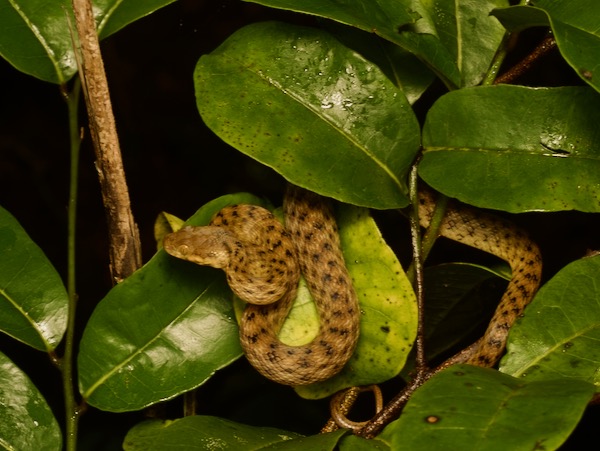

Common Madagascar Cat Snake,
Madagascarophis colubrinus
This is one of the most common snake species in Madagascar. We saw three of them at Palmarium.

Giant Madagascan Hognose Snake,
Leioheterodon madagascariensis
These are large diurnal snakes. I spotted this one in the morning rooting around in the sandy ground. (I'll leave it to you to decide which of us was rooting around.)
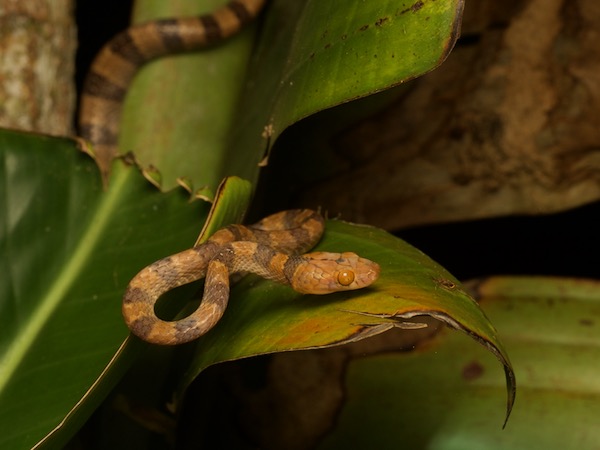
Arboreal Wolf Snake,
Lycodryas sp, probably
L. gaimardi
José found this beauty near our bungalows, after we had finished our night hike and were heading off to sleep.
Madagascar's most iconic snake is the Madagascar Leaf-nosed Snake, Langaha madagascariensis, a slender arboreal species beloved by snake lovers everywhere for its ridiculously silly snout. They live in drier forests around the periphery of the island and, while not particularly rare, can be very difficult to find due to their excellent camouflage. I had failed to see any in my previous two trips to Madagascar and on this trip it was the herp species I most wanted to see. I knew they had been found occasionally at Palmarium, so my hopes were high. Sure enough, on our first morning there, by the time we had finished breakfast, our local guide had located one of these oddball snakes.

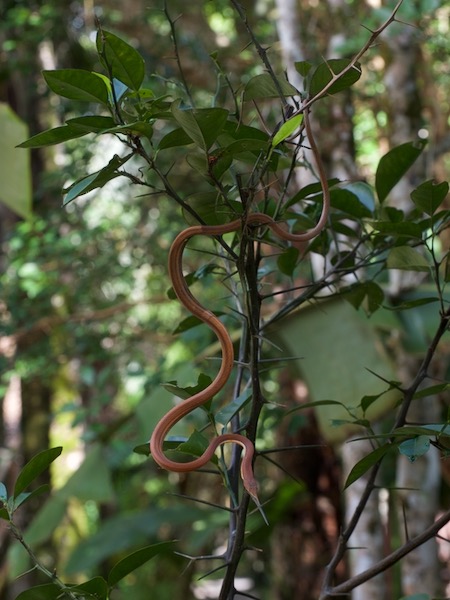
Madagascar Leaf-nosed Snake,
Langaha madagascariensis, adult male
When I saw this legendary snake, my first reaction was a combination of relief and unbridled joy. José's first reaction was "Now we must find a female". Oh yeah, right, no problem.
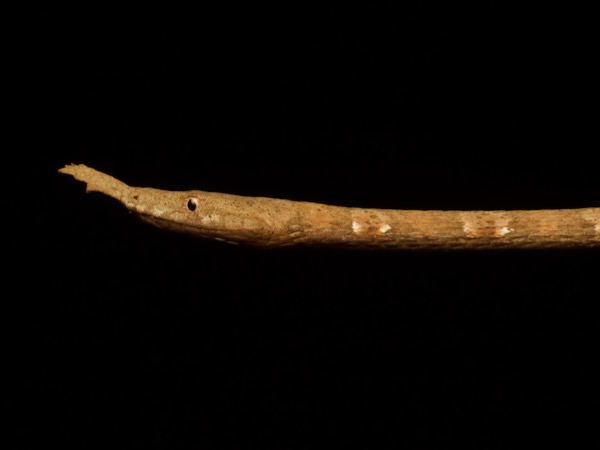
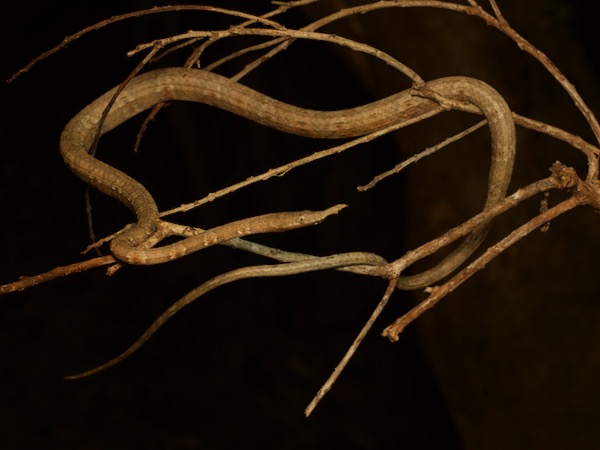
Madagascar Leaf-nosed Snake,
Langaha madagascariensis, adult female
And it wasn't a problem, for José at any rate; he found this female the next day. Males and females of this species both have crazy snouts, but where the males have thin pointy snouts, the females have serrated leaf-shaped snouts. Why? No one knows.
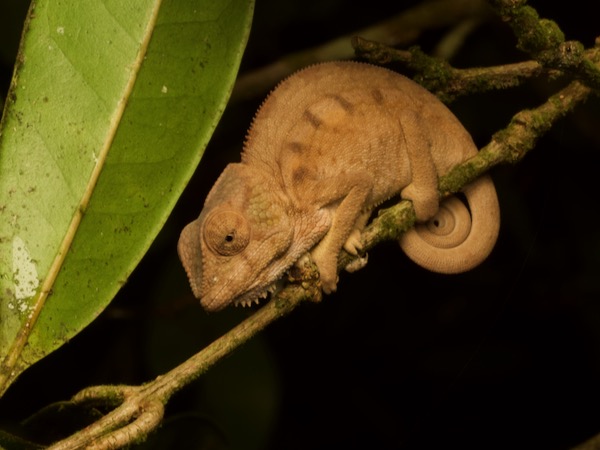
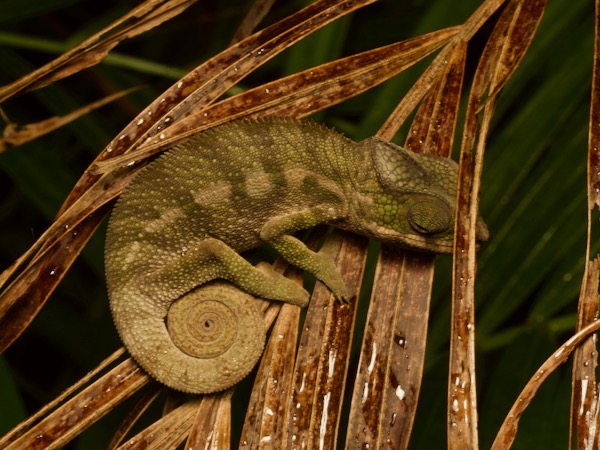
Panther Chameleon,
Furcifer pardalis, juveniles
Most of the chameleons we saw at Palmarium were Panther Chameleons, and most of those were juveniles. We saw quite a few of them in the trees around the bungalows, and only a few at any distance out in the forest. This, combined with the fact that this species is very popular in the pet trade, made me a little suspicious that perhaps these chameleons had been brought to Palmarium to interest tourists, a la many of the lemurs. But this location is near the southern extreme of the natural range of this species, so my suspicions might be unfounded.
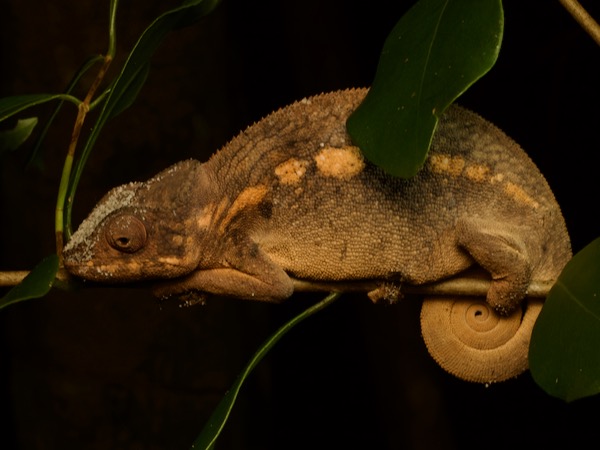
Panther Chameleon,
Furcifer pardalis, adult female
The sand on the snout of this adult female probably means that she has recently buried a clutch of eggs. Females of even the most arboreal chameleon species still climb down to the ground to excavate a hole in which to lay their eggs.

Parson's Chameleon, Calumma parsonii parsonii, adult male
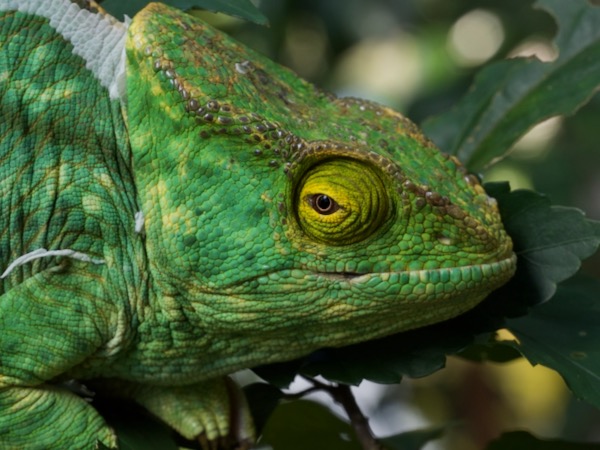
Parson's Chameleon,
Calumma parsonii parsonii, adult female
We also found a few more extra-jumbo Parson's Chameleons in the area. Magnificent beasts!
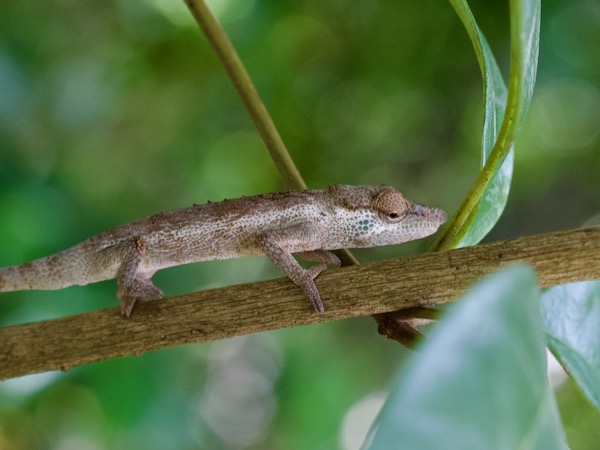
Vohibola Forest Chameleon,
Calumma vohibola
I tried to get at least one photo of every chameleon I saw, which occasionally turned out to be a useful habit. At the time, I assumed this was Calumma nasutum or one of its close relatives that we had already seen many times. But it turned out to be this quite localized endemic species instead (the particularly small rostral appendage and the green cheeks are distinguishing characteristics). This was the only individual of Calumma vohibola that we ended up seeing.
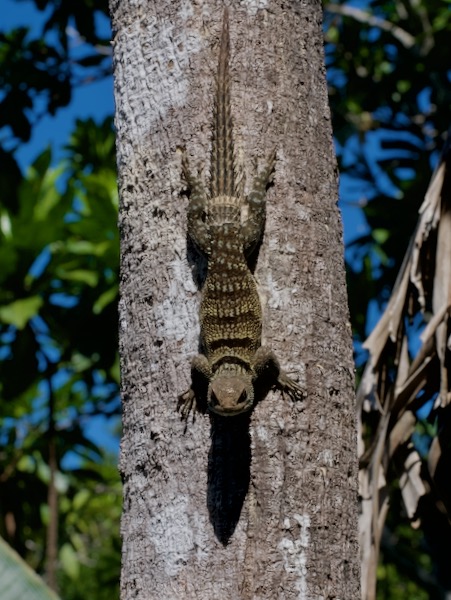
Cuvier's Madagascar Swift,
Oplurus cuvieri
Palmarium has a healthy population of these spiky-tailed dry forest lizards. However, I doubt whether these lizards are native to the area, since all the other populations are on the west side of Madagascar. I would like to think that the former proprietor deliberately brought these to the reserve in the belief that it would attract more tourists, but that seems a bit implausible. Maybe they hitched a ride somehow.
Palmarium offered up a nice selection of geckos for us. Most of them are even in their native ranges, which is saying something for Palmarium.
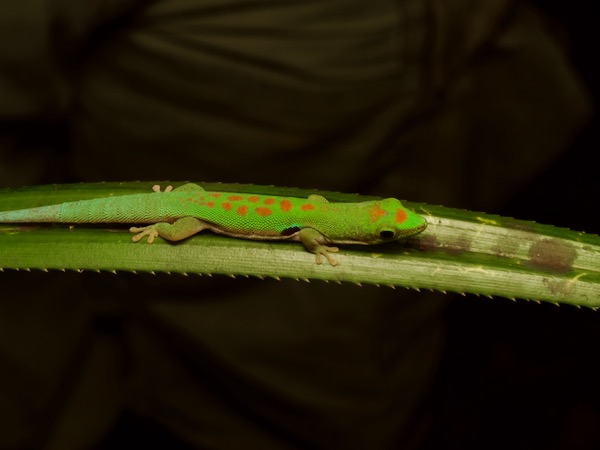

Lesser Madagascar Day Gecko,
Phelsuma parva
We found a half-dozen or so of these gorgeous little geckos on large Pandanus fronds, typically around water. José and Frank masterfully maneuvered them into photo-worthy spots without touching them. If Non-Contact Lizard Maneuvering were a field of study, the Tropical Herping guys would all have Ph.Ds in it.

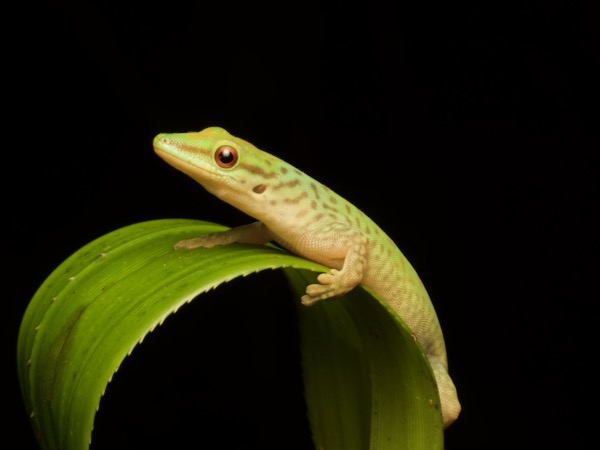
Speckled Day Gecko,
Phelsuma guttata
This is another beautiful day gecko species with a fairly small range. We found about ten of these, mostly resting at night.
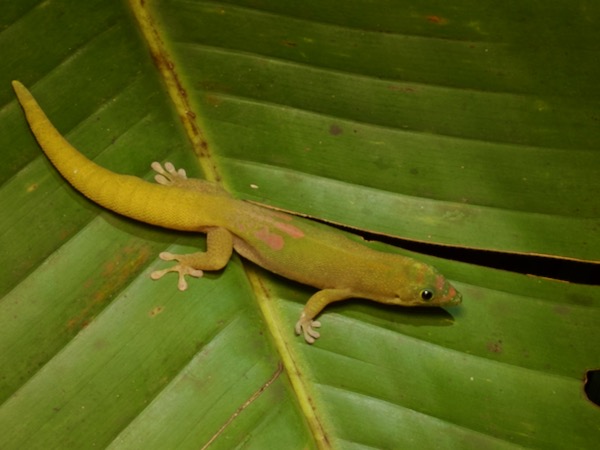
Gold Dust Day Gecko,
Phelsuma laticauda
This species has been introduced into several locations in the USA, most prominently in Hawaii, where they are abundant in some areas. We saw two or three around Palmarium, where they also seem to have been introduced; the native range in Madagascar is up around the northern tip. Perhaps they came along for the ride on some of the many translocated plants at this reserve.
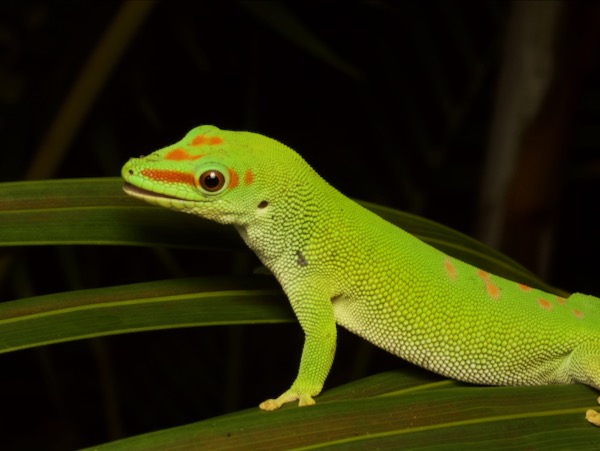
Madagascar Giant Day Gecko,
Phelsuma grandis
Like Phelsuma laticauda, this remarkably large species is also native to the northern tip of Madagascar, yet somehow found its way to Palmarium. My new theory is that these geckos came along for the ride on some of the many translocated plants at this reserve, and the Phelsuma laticaudas rode on their backs. Seems as good as any other knowledge-free theory.
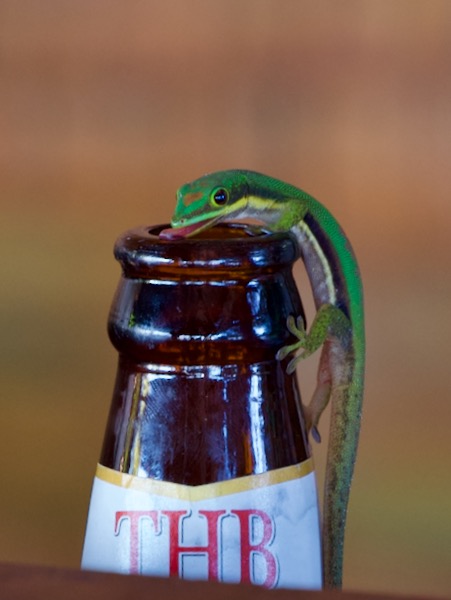
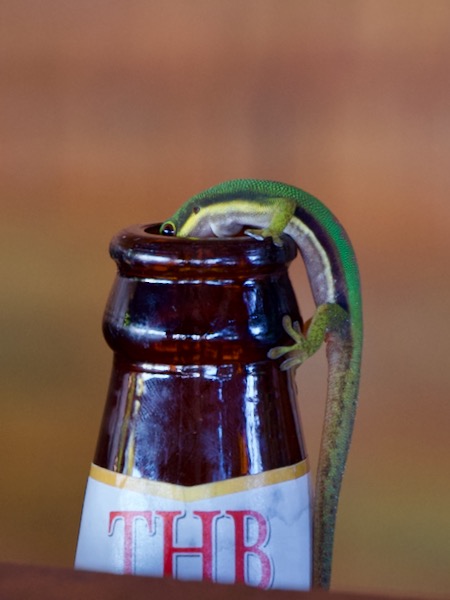
Striped Day Gecko,
Phelsuma lineata
We also saw a few more of this widespread day gecko that we had seen at Anjozorobe and around Andasibe. This was the most entertaining individual, for obvious reasons.

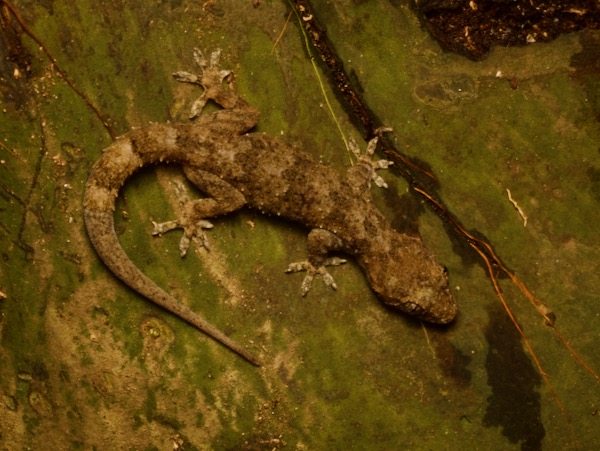
Farquhar Half-toed Gecko,
Hemidactylus mercatorius
Probably the least interesting of all the native geckos of Madagascar, but still a fine gecko. All geckos are fine, as every sensible person knows.
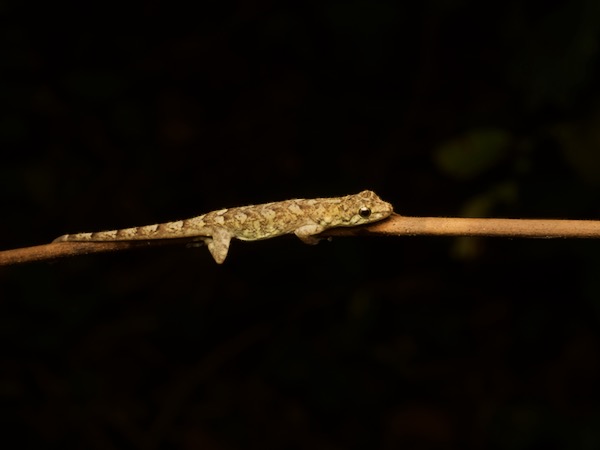
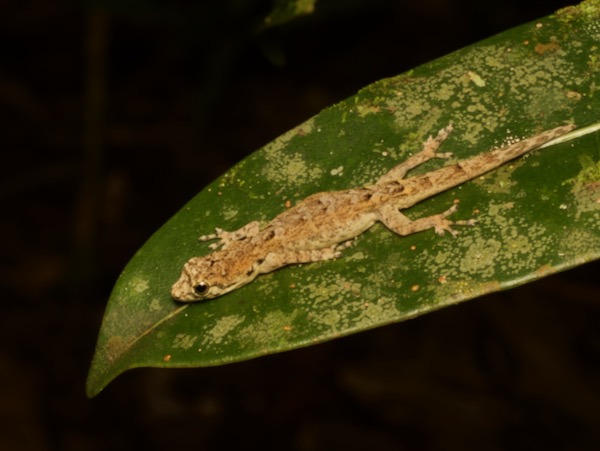
Gunther's Dwarf Gecko,
Lygodactylus fritzi
All of the Lygodactylus we saw in this area appeared to be the same species, and that species seems to be Lygodactylus fritzi. This species was only described in 2022 and is only known from Akanin'ny Nofy and its neighbor Vohibola.
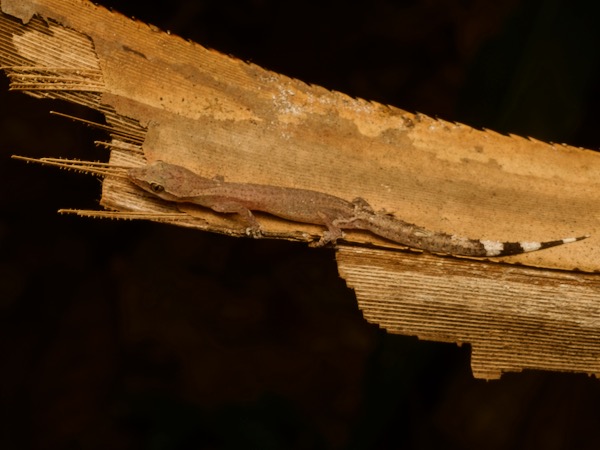

Boettger's Clawless Gecko,
Ebenavia robusta
Another adorable little Ebenavia species, just slightly smaller and, well, less robust than the Ebenavia robusta we saw around Andasibe.

Spotted Fish-scale Gecko,
Geckolepis maculata
Fish-scale geckos have large and extremely loosely attached scales, which slough off easily when pressure is applied. This allows the geckos to sometimes slip away from the grasp of predators at the expense of losing patches of their scales. The scales will eventually grow back. This chonky adult hasn't lost any of its scales, or at least not recently.

Spotted Fish-scale Gecko,
Geckolepis maculata
This one has performed more poorly in the scale-retaining game, but is equally alive, so let's call it a draw. It looks seriously injured, but it really isn't.
Next: Ranomafana








































































